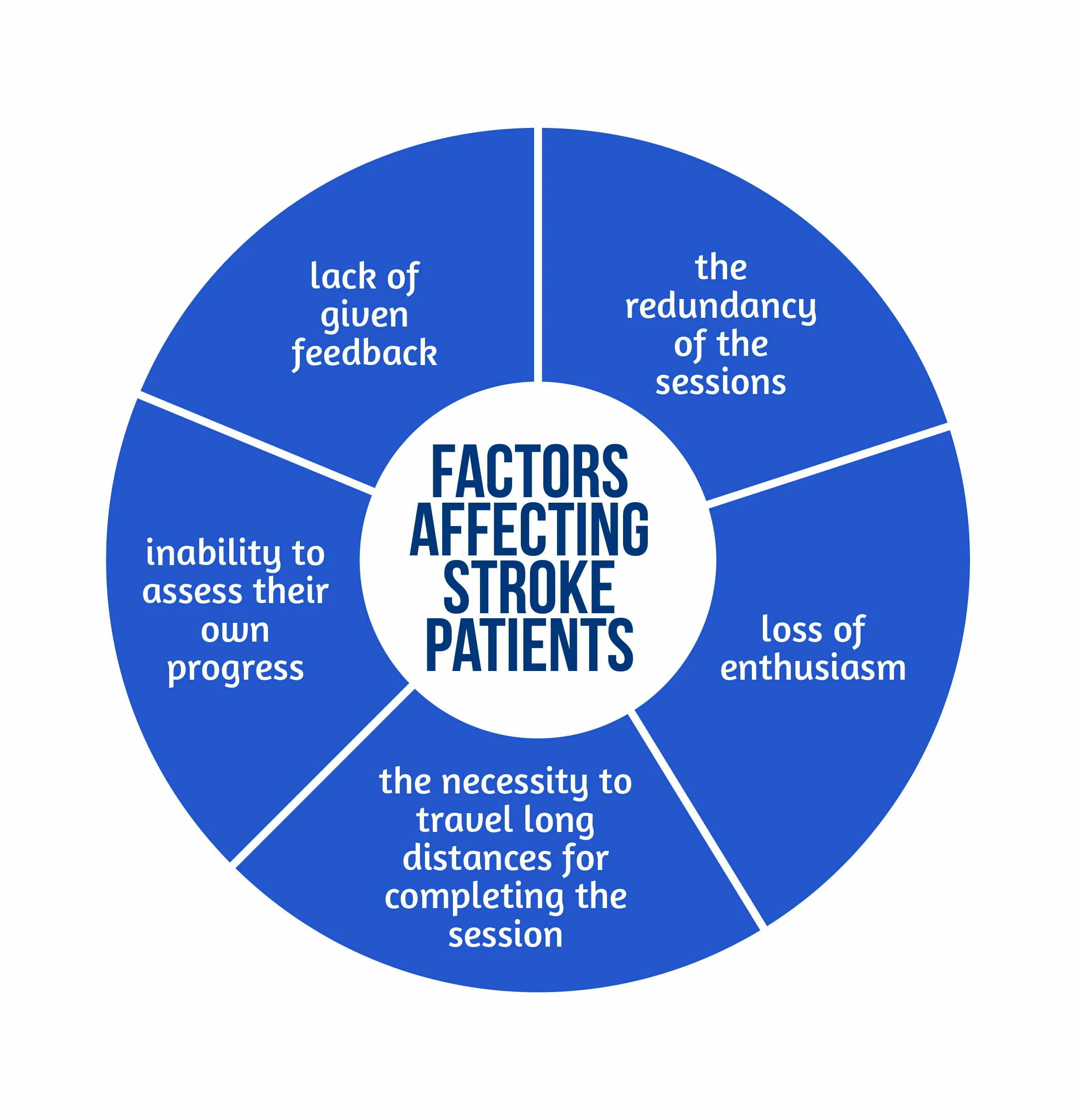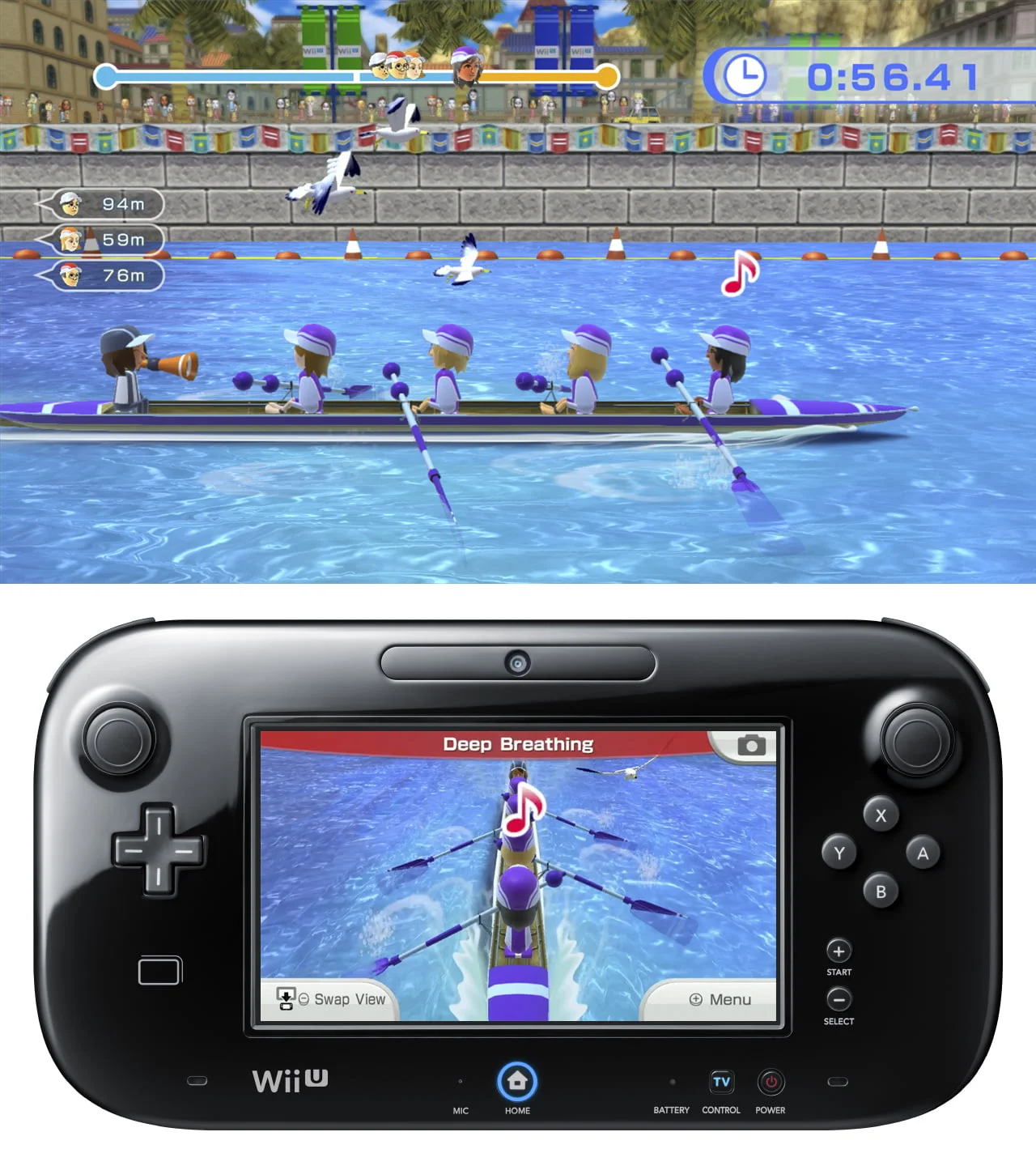Can gaming therapy impact post-stroke rehabilitation?

Authors: Victor Dabala, Oana Vanta
Keywords: stroke, rehabilitation, individualization, gamification
Focus keyword: gaming therapy
Gaming therapy avenues in stroke rehab: Can gaming therapy impact post-stroke rehabilitation?
Stroke rehabilitation models vary from one period to another in relation to the relatively steady number of stroke survivors each year. Most interventions currently in practice consist of multiple treatment sessions, for a period that usually is longer than one month. While the volume of rehabilitation administered is robust and can be focused on a specific deficit or impairment (e.g., language deficits, upper arm weakness, comprehension weakness), patient’s adherence is not always satisfied through current models [1, 2].
One justification is that the stroke population can be affected by a multitude of factors, as seen in Figure 1:

As one can consider that stroke is an impairment more specific for the elderly population, the statement cannot be considered veridic, since the etiology differs from one age group to another. Therefore, specific aspects could be considered for the individualization of the therapy, as one model can be considered more attractive than another for each patient [1, 2].
For more insight into stroke rehabilitation, visit:
- Post-stroke language impairments treatment using tDCS (Transcranial direct current stimulation)
- Naming therapy in patients with post-stroke aphasia
- The home use of virtual reality games in rehabilitation of stroke patients
What is the role of gaming therapy in stroke rehabilitation?
Considering that classical rehabilitation therapies struggle with maintaining the long-term interest of the patients, gaming therapy could be considered the missing link in the field.
Therapy through gaming developed progressively, gaining popularity because of the novel concepts proposed (e.g., the development of the Kinect by Microsoft – which was the first system that did not require controllers to process the user’s commands and movements, or the Wii-Fit, a Nintendo product that records the patient’s information through sensors – Figure 2).
Some of the advantages that therapy through gaming brings into the broad domain of neurorehabilitation include:
How can a gamification framework help? Which are the basics?
As gaming therapy can be considered traditional in certain ways, a specific concept was developed recently – the concept of creating a gamification framework. In simpler terms, the correlation of different games and gaming systems in a single place. A gaming system can be created through different processes, a viable example being the use of Internet browsers. A framework has several advantages over non-custom-made games, which cannot offer a fully immersive and complete experience to the patient [1].
Disadvantages of non-custom games are presented in the Figure 3 below [1].

Using web services (Websites, web apps – furtherly divided into web applications and web-based games), the patient can use the whole process whenever needed, as there is no condition besides a suitable Internet connection [1].
Each part of the proposed framework plays a different role: the websites act as bridges between patients, facilitating communication and sharing helpful information; the web apps assure that the users can continue their in-game progress, acting as a saving point. The web-based games differ from conventional (downloadable) games as they do not require an installation process as a prerequisite. As a result, the web-based rehabilitation process can be considered an individualized form of therapy. For each patient, a profile is developed, which can be accessed from any place [1].
To strengthen the beneficial role of gaming therapies, a recently published meta-analysis showed that rehabilitation performed through serious games (games that have a different purpose than entertainment) improved the adherence of patients and their results, compared to conventional recovery models. The research paper targeted studies that included stroke survivors with upper-limb motor impairment [5].
What are the features of a rehabilitation framework?
The unique design of rehabilitation games allows stroke survivors to be the main target population of the therapy. It can adapt to the needs of the patient, especially in terms of complexity. Therefore, the difficulty aspect differs from non-custom-made variants, as it offers a more immersive playthrough, gradually adapting the difficulty. In contrast to the classical “easy-intermediate-hard” concept that other rehabilitation games inquire about, the framework adapts to the specific impairment of patients. In other words, it will increase the difficulty when the deficit decreases or a specific function improves.
Three essential features were constructed around the framework:
- “Failure control”
- “Meaningful gameplay”
- “Challengeable levels”
Failure Control allows incorporating feedback and how it will benefit the patient. If the feedback is in strong correlation to the dynamics of the patient, the latter can generate more robust progress, as the interface communicates with the user through auditory, visual, and haptic channels (e.g., regulating the difficulty or generating in-game bits of advice) [1].
Meaningful Gameplay is in a solid relationship to failure control – the notion of failure can be frustrating for the users, while on the other hand can create a precious analysis of the player performance, from which it can inspire to continue making progress. It is different from the “Game over” concept that is accustomed to classical rehabilitation games, which is considered rigid and can hinder communication with the patient, adding a certain degree of depression [1].
The Challenge Level can be considered as important as the first two, as it allows the adaptability of the whole process. As not all patients develop the same deficit, the gamification framework can compute the exercises the users will certainly complete. While the player uses the local web service, the patient’s data is continuously recorded, allowing the construction of an individualized profile [1].
Are there better models?
Even though classical neurorehabilitation games are not as immersive as the proposed framework, several alternatives can be considered [6]:
- Brain Age – Nintendo-based game which recruits several different minigames, each focusing on a different cognitive process (e.g., calculation, short-term memory). The results were favorable regarding improving executive functions, while the viability for long-term progress and everyday functioning has not been proved.
- FitMi – Exhaustive software comprising over 40 simulated situations in which most muscles can be trained (from the hand to the core). The users must complete the tasks in a given time interval, computing a similar level of difficulty adaptability as a gamification framework.
- CT Speech and Cognitive Therapy – A relatively novel application that can train functional loss in different domains (e.g., speech, memory, attention) by using over 100000 exercises. Again, a degree of adaptability was included, as the complexity will increase as the user improves.
Conclusions
As the field of neurorehabilitation is continuously expanding, novel techniques and models are developed based on the current needs of the stroke population. Certain aspects, such as the adherence to treatment or the adaptability of a program to the needs of a patient, are considered priorities.
As a comprehensive rehabilitation modality, an integrative gamification framework proposal could resolve the problems above. Moreover, adding new dimensions to the whole process can be considered an advantage, as the patient’s progress can be carefully watched while the tasks can be completed in the comfort of one’s home.
References
- Inho Jung, Joongsup Lee, Jaehyo Kim, and Changbeom Choi. Ubiquitous gamification framework for stroke rehabilitation treatment based on the web service. In Proceedings of the 4th Workshop on ICTs for improving Patients Rehabilitation Research Techniques (REHAB ’16) 2016. Association for Computing Machinery, New York, NY, USA, 117–120. https://doi.org/10.1145/3051488.3051511
- Sall J, Eapen BC, Tran JE, Bowles AO, Bursaw A, Rodgers ME. The Management of Stroke Rehabilitation: A Synopsis of the 2019 U.S. Department of Veterans Affairs and U.S. Department of Defense Clinical Practice Guideline. Ann Intern Med. 2019;171(12):916-924. doi: 10.7326/M19-1695.
- Tosto-Mancuso J, Tabacof L, Herrera JE, Breyman E et al. Gamified Neurorehabilitation Strategies for Post-stroke Motor Recovery: Challenges and Advantages. Curr Neurol Neurosci Rep. 2022;22(3):183-195. doi: 10.1007/s11910-022-01181-y.
- Wii Fit U Preview – Preview – Nintendo World Report. Available at: http://www.nintendoworldreport.com/preview/35762/wii-fit-u-wii-u
- Doumas I, Everard G, Dehem S, Lejeune T. Serious games for upper limb rehabilitation after stroke: a meta-analysis. J Neuroeng Rehabil. 2021;18(1):100. doi: 10.1186/s12984-021-00889-1.
- Video Games for Stroke Patients: Which Ones to Try (flintrehab.com). Available at: https://www.flintrehab.com/video-games-for-stroke-patients/










